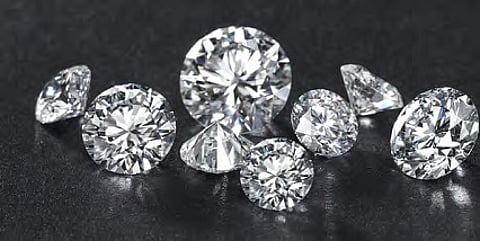

So, since the late 70s – early 80s, the industry has been following a set international price for diamonds (Rap List), something that the colour gemstone industry has not been able to replicate. Agreed, adopting a benchmark has helped bring in more transparency in the pricing system and garner more consumer confidence but not without a tradeoff – what is supposed to be eternally rare and valuable has been commoditized so to speak. Gold as a commodity has also been following a market price, but while every ounce of gold is the same, no two diamonds are the same. The Rap List, since its inception has posed two problems – one, it generates its prices based only on carat, colour and clarity, but diamonds are beyond those parameters of grading, there are other intrinsic values in a diamond. Anybody who has been in the industry long enough would know that different diamonds of the same grade can look very different. The second and more prominent problem with the Rap List, something that most dealers resonate with is the monopoly and controlling of diamond prices for several decades. When the Rap List alters, it impacts diamond prices all over the world. Rap List, which is also presumably based on the simple economic law of supply and demand, decided to drop the prices recently, when there was absolutely no business happening around the world, which led to the industry’s furor. A benchmark price list that has had the ability to make or break businesses with its decision to alter prices based on a methodology that has hitherto been ambiguous, has led many to reflect on the problems associated with the current system and a fair way of arriving at benchmark pricing.
The common parlance used in the industry is “back off rap”, “15 back” or “plus 10” meaning the diamonds are traded at a discount to Rap – normally x% on the asking price. “The price should be based on actual deals and invoices. Meaning that an item base price should be based on similar items that were sold during a specific period of time. It is very easy to analyze the data that is being accumulated today. The big manufacturers and wholesalers have been accumulating this data. Based on an average of actual sales of each item, this data can be analyzed and a trustable benchmark could be produced. This is a fair, correct and logical system anyone could trust,” says Eshed.
Price list must be derived from the collection of B2B data and even B2C data of at least last 12 months and it should be analysed at every quarter says Pratik Shah of DiaSense. “I must add that data analysis alone cannot justify the polished price list. The mechanism must be transparent to all B2B segments and must be approved/verified by the industry as well, especially by manufacturers and traders including sight holders, SMEs and even small traders,” he adds.
More than calculating on the average of actual deals, stakeholders in the diamond industry need to give their inputs on the price list. “The single most important factor in determining the price list is data collected from actual sales of polished diamonds as well as procurement situations of rough diamonds. This list should reflect insight from miners, diamantaires, bankers, manufacturers, traders and retailers, and market analysts worldwide integrated,” adds Hamesh.
Get Diamonds recently launched by WFDB guarantees that it will be different. “It is working on a format which looks good and suitable for the market but we still don’t know the correct picture. Let’s hope it is a good replacement for Rapaport prices,” says Chirag Jogani of Anita Diamonds.
Follow DiamondWorld on Instagram: @diamondworldnet
Follow DiamondWorld on Twitter: @diamondworldnet
Follow DiamondWorld on Facebook: @diamondworldnet
